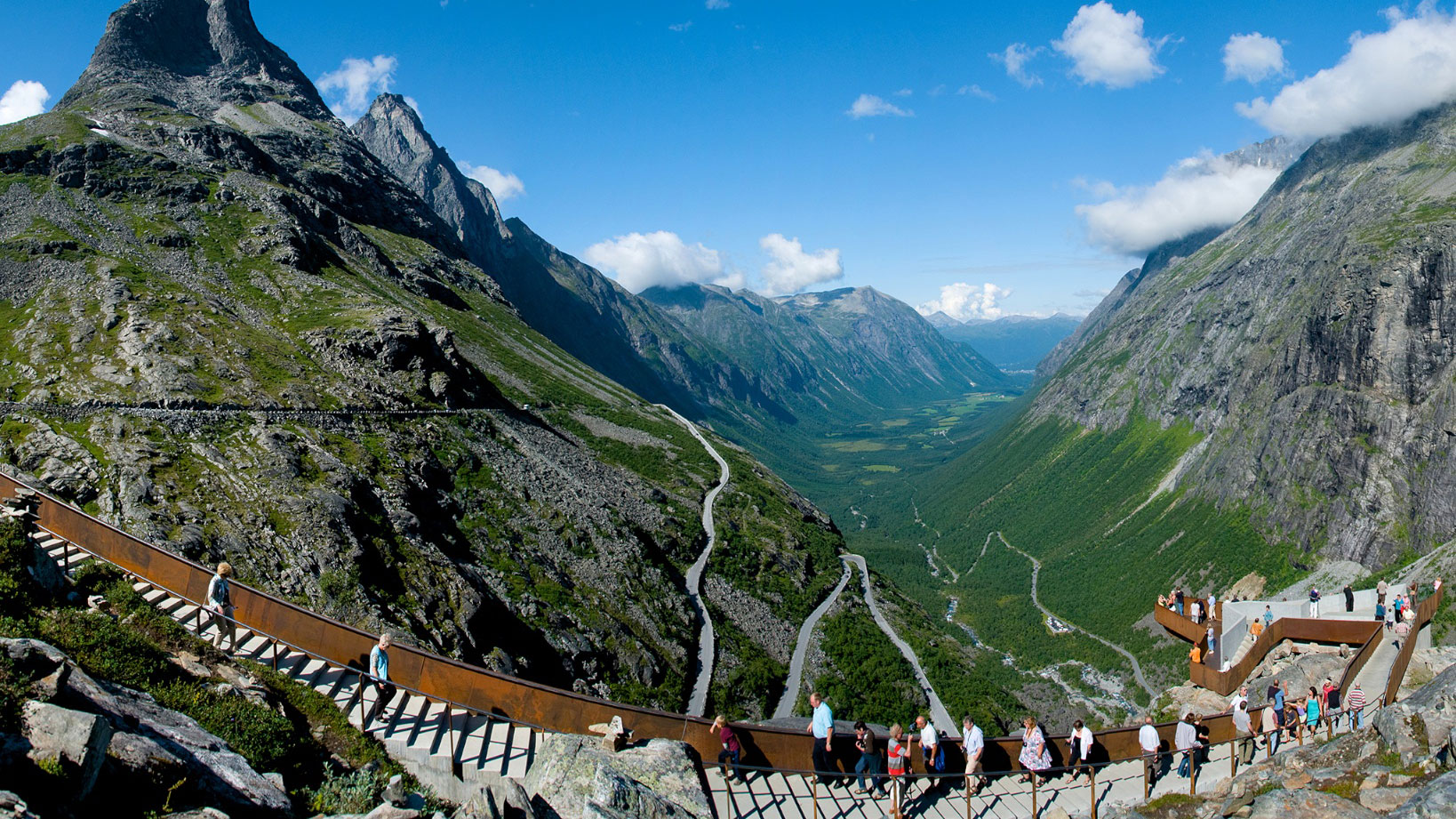The viewing platform, an architectural object in growing demand, is used so that certain landscapes or natural elements can be appreciated by tourists and visitors. Lookout points are a type of architectural project, an attraction for tourism, which generally requires a minor investment. Here we take a look at some recent projects around the world, which stand out for the solidity and elegance of their architecture, as well as their sensitivity to the landscape.
Abrante
La Gomera, Canary Islands, Spain. Architecture: José Luis Bermejo Martín
At 620 m above sea level, the viewpoint has a seven-metre-long cantilever and a glass floor that gives the sensation of walking on air. Four hundred metres below you can see the small valley of Agulo, squeezed between almost vertical cliffs and open to the Atlantic Ocean, with its agricultural terraces and villages. Tenerife can be seen in the distance.
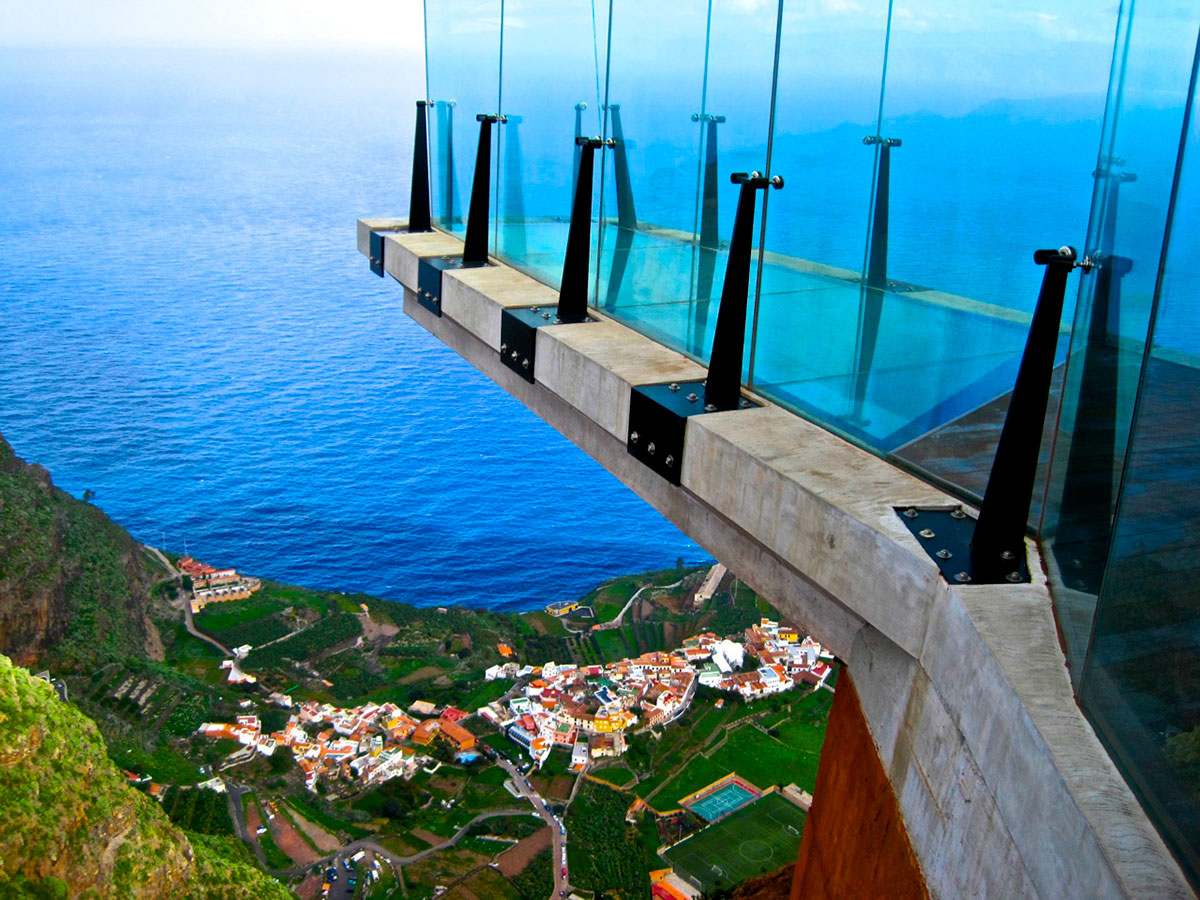
Columbia Icefield Skywalk
Jasper National Park, Alberta, Canada. Architecture: Sturgess Architecture
A company built this observation deck as a tourist attraction above the Sunwapta Glacial Valley in Jasper National Park in Alberta, Canada. Its arched glass floor defies the void 280 m above the valley floor. It attracts more than 375,000 visitors each year. It is not suitable for people with vertigo. To enjoy it you need to buy a ticket at the Columbia Icefield Glacier Discovery Center, from which buses take visitors up to it.

Messner Mountain Museum Corones
South Tyrol, Italy. Architecture: Zaha Hadid
It was created in 2006 on the initiative of the Italian extreme mountaineer Reinhold Messner, the first person to climb all 14 mountains on the planet over 8,000 m, including Everest without oxygen. It is a museum on the summit of the Kronplatz with a viewing platform. The museum, dug into the summit, displays works inspired by the mountains and old mountaineering equipment and photos. It is accessed like a cave, to emerge through several viewpoints: one looking southwest from the summit of the Peitler Kofel, another looking south towards the Heiligkreuzkofel peak, and a third balcony looking west to the Ortler and South Tyrol.

Rio Seco Mines
Asturias, Spain. Architecture: Zon-e Arquitectos
This viewing platform consists of a walkway supported by a cyclopean wall, which supports a large frame through which visitors can look out. The concrete, rusted metal and recycled wood used in its construction are inspired by the mining tradition of the place, of which the ruins can be admired.

Las Cruces Viewpoint
Jalisco, Mexico. Architecture: Elemental
Every March, especially in the week before San José (19 March), hundreds of pilgrims travel the 117 kilometres between the Mexican towns of Ameca and Talpa de Allende (the Pilgrim’s Route) to worship the Virgin of the Rosary. In 2008, the State of Jalisco asked several architects for projects for rest areas and viewpoints at strategic points along the route.
There were two elements of interest at the location of the viewpoint: the panoramic view of the valley and the crosses. It was therefore decided to build a double viewing platform. In addition to being a viewpoint, pilgrims can enjoy the dense shade inside the well ventilated interior. Also, at certain times of the year, a rainwater collection system produces a mirror effect inside.

Paratge de Tudela
Girona, Spain. Architecture: EMF & Ardèvols Associats
The viewing platform is part of a project to restore a stretch of the Cap de Creus coastline in Cadaqués, where a peculiar 400-room Club Med hotel resort was built in the 1960s. It was finally demolished and a new public space with viewpoints and paths was created.

Stegastein
Aurland Fjord, Norway. Architecture: Todd Saunders & Tommie Wilhelmsen
This viewing platform is accessed by a narrow, winding road with spectacular views. At 640 metres above the Aurland Fjord, it consists of a 33.6 m long and 13.5 m high ramp on a galvanised steel and pinewood structure. The Aurland Fjord is a popular destination for cruise ships because of its beauty.

The Elastic Perspective
Rotterdam, The Netherlands. Architecture: NEXT Architects.
Inspired by the figure on the Moebius strip, the viewing platform offers a view over the city of Rotterdam. It is made of rusted steel. It is easily accessible by tram from the city.
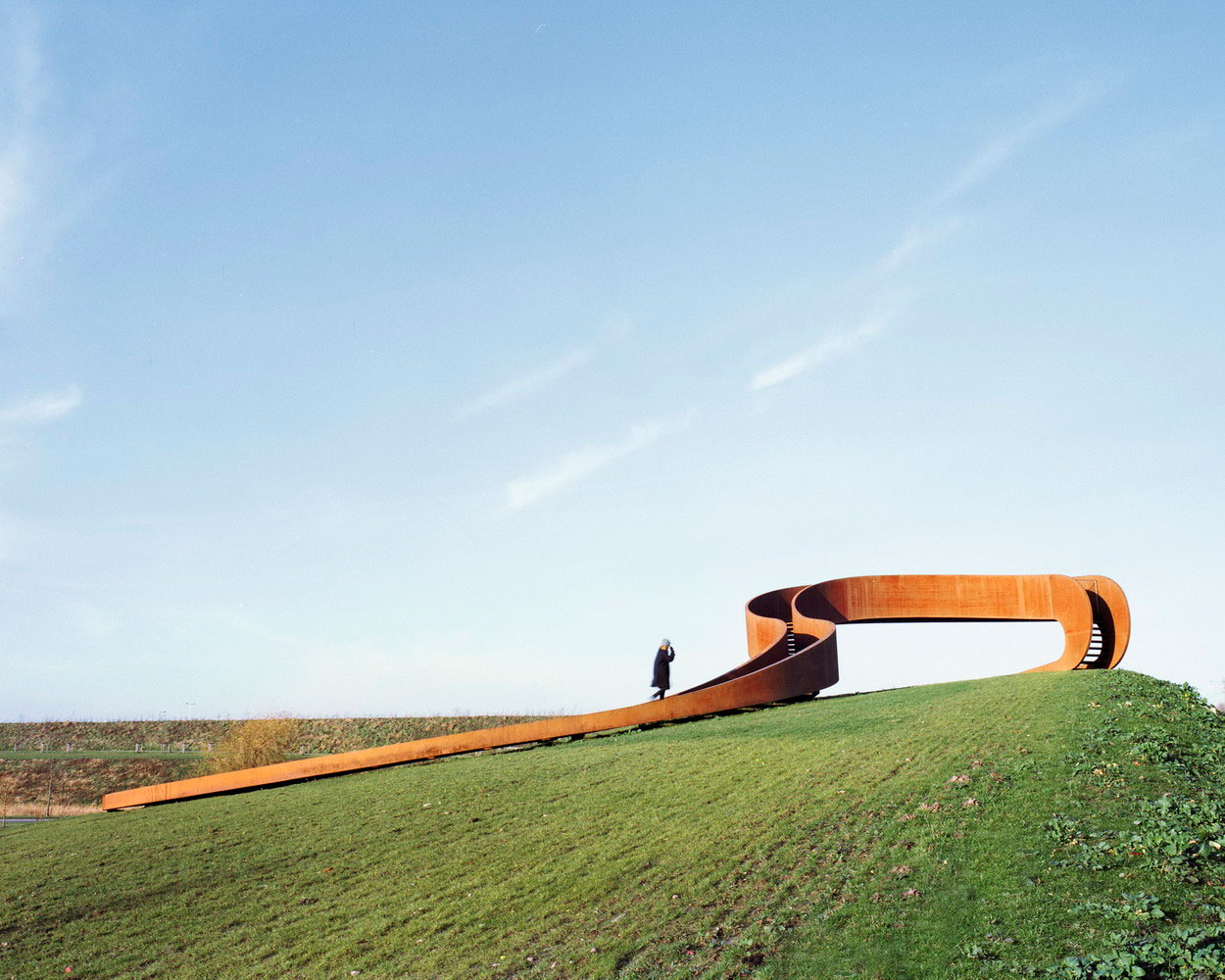
Trolsstigen
Norway. Architecture: Reiulf Ramstad
The Trolls’ Staircase is actually a route with two viewpoints, a mountain hut and other points of interest. It offers a spectacular view over the 320 m high Stigfosen Waterfall and the Geiranger Fjord. The narrow, winding access road is closed during autumn and winter.
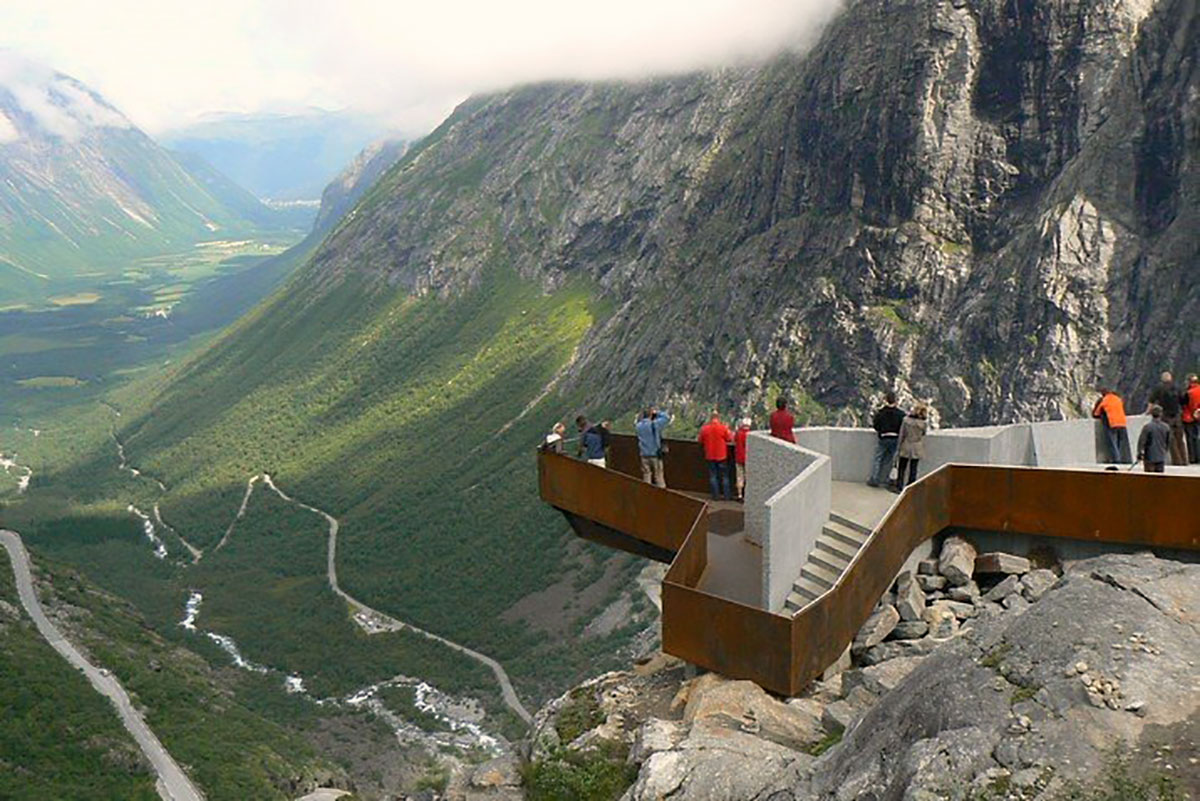
Tverrfjellhytta
Dovrefjell Park, Norway. Architecture: Snohetta
This is not a conventional viewing platform, perched on a cliff, but its interesting architecture encourages us to include it in our selection. It is part of the pavilion of the Norwegian Wild Reindeer Centre, and is home to visitors to Dovrefjell National Park. The park’s territory, which gave rise to many local legends, is home to wild reindeer, musk oxen and arctic foxes. Located 1,200 m above sea level, the viewing platform takes the form of a Corten steel box or frame. Inside, a wooden core appears to be eroded, like rock or ice, by natural forces. The result is a space traversed by organically shaped benches. Mount Snohetta can be seen through its openings.
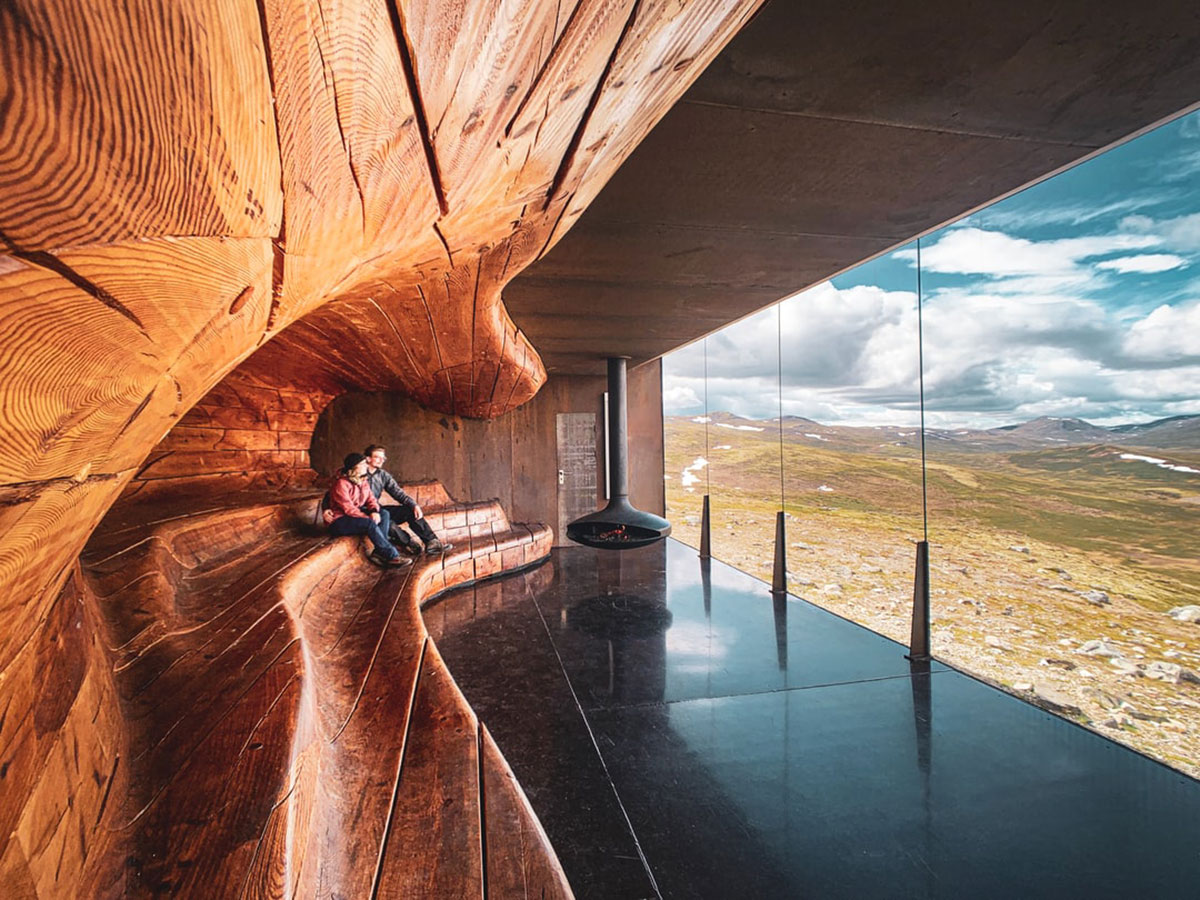
By Miquel Solís, senior architect in Amusement Logic’s architecture department.


